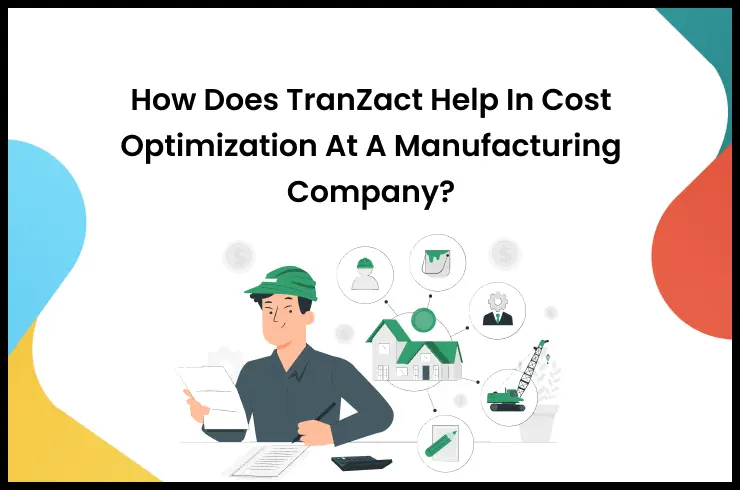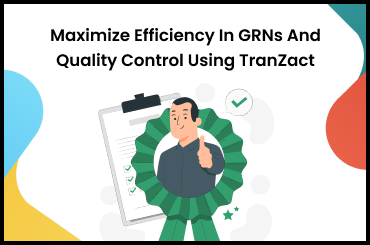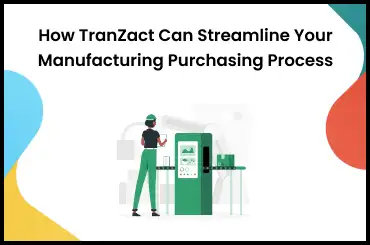Supplier relationship management is a strategic approach to managing supplier interactions to maximize value from supplier relations and minimize risk. In today's business world, suppliers are considered a vital part of a company's success. Companies rely on suppliers for timely, high-quality products or services to satisfy their customers, and therefore, looking after supplier relationships is crucial for businesses.
In this blog, we will explore the concept of Supplier Relationship Management (SRM) and its importance in modern business. Read to learn further on this topic.
What Is Supplier Relationship Management?
Supplier relationship management is a process that involves identifying, selecting, and managing suppliers in a way that creates long-term value for both parties. Rather than just buying goods or services from suppliers, SRM focuses on creating collaborative relationships with them.
It aims to maximize the value suppliers bring to an organization by creating strong, collaborative relationships built on trust, communication, and mutual benefit. Supplier relationship management encompasses a wide range of activities, including supplier selection, performance monitoring, contract management, and risk mitigation. The ultimate aim of SRM is to create a competitive advantage by leveraging the expertise and capabilities of suppliers to drive innovation, cost reduction, and quality improvements.
Objectives of Supplier Relationship Management
There is no doubt that the role of supplier relationship management is very vital for every business operation, and the supplier relationship management process needs to match your business's objective. Therefore, here are a few objectives of SRM to help you align your business operations accordingly:
Cost Reduction
The first objective of SRM is to reduce the cost of doing business with suppliers. It involves working with suppliers to identify cost-saving opportunities and negotiating more favorable pricing and payment terms.
Quality Improvement
Supplier relationship management aims to improve the quality of products and services provided by suppliers. It involves setting quality standards, monitoring supplier performance, and working with suppliers to implement process improvements.
Risk Mitigation
SRM helps mitigate the risks associated with suppliers by identifying and assessing risks in advance, developing risk management plans, and implementing risk mitigation strategies.
Innovation
Supplier relationship management promotes innovation by working closely with suppliers to identify new technologies and processes to improve products and services.
Continuous Improvement
SRM is focused on constant improvement and developing long-term relationships with suppliers. It involves setting performance targets, monitoring supplier performance, and providing feedback to suppliers.
Collaboration
Supplier relationship management is about collaborating with suppliers to improve the value chain. It involves sharing information, working together to identify opportunities for improvement, and developing joint initiatives to achieve common goals.
Compliance
SRM helps to ensure compliance with regulatory and ethical standards. It involves working with suppliers to ensure that they comply with applicable laws, regulations, and industry standards.
Benefits of Supplier Relationship Management
Businesses maintain strong relationships with their suppliers through supplier relationship management as part of procurement. It focuses on maximizing the value of supplier partnerships, improving supplier performance, and reducing costs. Some of the top benefits of supplier relationship management include the following:
Improved supplier performance
Supplier relationship management helps businesses work more closely with their suppliers to understand their strengths, weaknesses, and areas for improvement. This information can be used to develop joint improvement plans that increase supplier performance and help the business meet its goals.
Better risk management
By working closely with suppliers, businesses can better understand potential risks in their supply chain and develop strategies to mitigate them. It includes identifying alternative suppliers, establishing contingency plans, and monitoring supplier performance to ensure they are meeting quality, delivery, and compliance requirements.
Cost savings
Effective supplier relationship management can help businesses negotiate better pricing, terms, and conditions with suppliers, reducing costs and improving profitability. It can also help identify opportunities to consolidate suppliers and reduce complexity in the supply chain.
Innovation and collaboration
By developing close partnerships with suppliers, businesses can tap into their expertise and knowledge to drive innovation, improve product quality, and create competitive advantages. It can lead to new products, processes, and technologies to enhance the business's bottom line.
Enhanced reputation and brand image
By working with high-performing, socially responsible suppliers, businesses can enhance their reputation and brand image. It can help attract new and long-term customers, retain existing ones, and differentiate the business from its competitors.
Improved supplier diversity and sustainability
Supplier relationship management can help businesses develop and maintain relationships with suppliers that are diverse, socially responsible, and committed to sustainability. It can help the business meet its sustainability goals and promote positive social and environmental outcomes in the broader community.
Tasks of Supplier Relationship Management
The primary task of the supplier relationship management system involves managing and optimizing the interactions and relationships with suppliers. These tasks include:
Supplier Selection
Identifying and selecting suppliers who can provide quality products and services and meet business needs. Dividing the suppliers into groups based on specific criteria such as product category, market coverage, spending volume, and performance is vital for the business. It primarily aims to identify the critical and strategic suppliers significantly impacting the organization's business operations and profitability.
Contract Negotiation
Negotiating the terms and conditions of the contract that are favorable for both the buyer and the supplier.
Performance Monitoring
Monitoring supplier performance to ensure they meet their contractual obligations and deliver quality products/services on time.
Relationship Building
Establishing and building positive relationships with suppliers to foster trust and collaboration and address any issues or concerns.
Risk Management
Identifying and managing risks associated with the supplier relationship, such as supply chain disruptions, quality issues, or regulation changes.
Continuous Improvement
Continuously improving supplier performance and relationships by identifying areas for improvement, setting performance goals, and providing feedback and support.
Supplier Relationship Management Process
The supplier relationship management process typically includes the following steps:
Supplier Identification and Segmentation
It involves identifying and segmenting suppliers based on their importance to the organization and their ability to meet its needs.
Supplier Performance Measurement
This step of supplier relationship management involves evaluating supplier performance against established criteria, such as quality, delivery, cost, and service.
Supplier Development
Improving the performance of suppliers who fail to meet the organization's needs through the supplier development process.
Supplier Integration
This step involves integrating suppliers into the organization's processes and systems to improve collaboration and efficiency.
Supplier Relationship Monitoring
This step involves monitoring supplier performance over time to ensure they meet the organization's needs.
Supplier Relationship Management Software
It is a computerized system that helps businesses manage and optimize their supplier relationships. It enables organizations to manage supplier information, track performance, collaborate with suppliers, and monitor compliance.
Supplier Relationship Improvement
This step involves continually working with suppliers to improve their performance and strengthen the relationship.
SRM Use Cases
SRM use cases refer to the various scenarios or situations in which SRM can be applied to improve supplier relationships and drive better business outcomes. The primary use of SRM is to help organizations establish key performance indicators (KPIs) to measure supplier performance, identify areas for improvement, and develop corrective action plans to address any issues.
There are various instances in the business process where SRM is used. Some of those instances are:
- Limiting the potential risks involved with the supplier, such as financial, operational, and reputational. Supplier relationship management can help organizations identify and mitigate these risks by establishing risk assessment processes.
- Foster collaboration and innovation with suppliers, such as co-creating new products or services.
- Reducing the supply chain costs.
- Taking better advantage of supplier performance while taking care of quality, cost, delivery time, and product reliability.
- Supplier relationship management can help organizations manage the entire contract lifecycle, from contract negotiation to renewal, by establishing clear terms and conditions, monitoring compliance, and managing any disputes or changes to the contract.
Supplier Relationship Management Challenges
Supplier Relationship Management can benefit organizations, while also presenting certain challenges, here are some common challenges of SRM:
Data Management
Effective SRM requires accurate and timely supplier performance, quality, and compliance data. Organizations must invest in technology solutions that integrate and analyze this data to provide insights into supplier relationships.
Stakeholder Alignment
Supply relationship management requires collaboration and coordination among various stakeholders, including procurement, supply chain, finance, and legal teams. However, these stakeholders may have different priorities and objectives, creating conflicts and hindering effective SRM.
Performance Metrics
Identifying the right metrics in SRM can be challenging, mainly if suppliers provide different products or services. Organizations must work with suppliers to establish mutually beneficial performance metrics aligning with their business objectives.
Resistance to Change
Implementing SRM may require changes to established systems and relationships. Resistance to change from internal stakeholders and suppliers can hinder the SRM process.
SRM Software
SRM software is used for various reasons and has multiple capabilities to streamline the supply chain process of the organization. So here are some key features of the supply relationship management software:
- SRM software allows organizations to manage supplier information.
- It enables organizations to measure and track supplier performance against KPIs.
- Provides tools to manage the entire contract lifecycle, from contract creation to renewal.
- SRM software offers tools for collaboration and communication between organizations and suppliers.
- SRM software has dashboards and analytics to track supplier performance, identify trends, and generate reports.
- It helps integrate with other systems, such as procurement, finance, and supply chain management software. It allows for seamless data flow and collaboration across different functions and systems.
Build Strong Supplier Relationships With TranZact
Collaborative supplier relationship management strategies are critical for organizations building strong, mutually beneficial workflows and relationships with their suppliers. TranZact offers a modern and digitized platform to collaborate and manage supplier relationships. It offers professional document creation and transaction timelines, enabling tagging and commenting suppliers and vendors to ensure seamless business communication and execution! It also offers end-to-end business automation across sales, inventory, purchase, and production operations for business growth!
FAQs on Supplier Relationship Management
1. What are the types of supplier relationships?
Several types of supplier relationships exist, including arm's length, strategic partnerships, and collaborative relationships. Transactional relationships are also common, as well as sole supplier and multiple supplier relationships. The type of relationship chosen depends on the company's needs and objectives and can range from short-term transactions to long-term collaborations.
2. How to improve supplier relationship management?
Here are some ways supplier relationship management can be improved:
- Define clear expectations.
- Build trust.
- Monitor and measure supplier performance
- Foster communication and collaboration
- Implement technology solutions
- Conduct regular supplier assessments
3. What is the supplier relationship cycle?
The supplier relationship cycle refers to the stages that a company goes through in its interactions with suppliers. These stages typically include supplier selection, contract negotiation, performance evaluation, and ongoing relationship management.
















